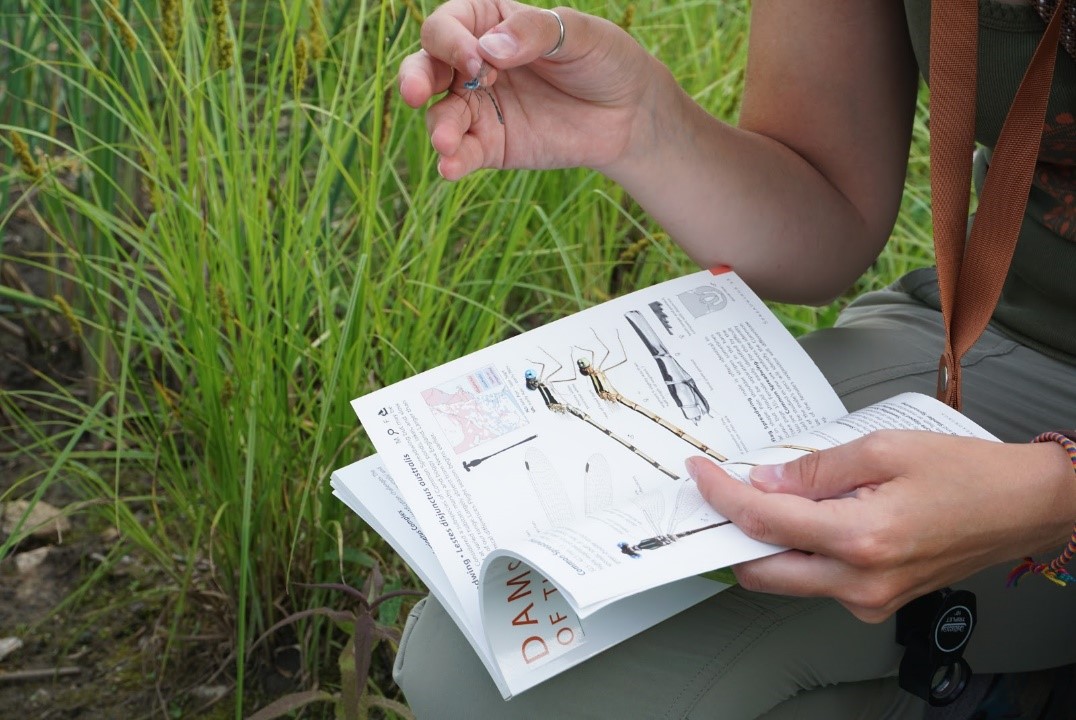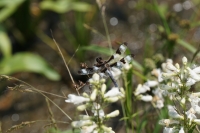This summer, the Urban Ecology Center, as well as the Wisconsin Dragonfly Society, will be holding statewide bioblitz events! Join the Urban Ecology Center in celebrating dragonflies and damselflies in our virtual event, “How to Train your Dragonfly” on Saturday, July 11th from 11:00 am to 12:30 pm. This event will coincide with the Wisconsin Dragonfly Societies’ statewide bioblitz.
Since the early 2000s, The Wisconsin Dragonfly Society (WDS) has been using the community to collect data and record dragonfly sightings. As a member of the WDS, you can help scientists survey Wisconsin, participate in events, and advocate for the conservation of dragonflies and damselflies. Memberships with the WDS are $5 per year for a single membership and $7.50 for a family membership.
As part of the “How to Train your Dragonfly” various family-friendly crafts and activities will be available for you to participate in virtually. The event will feature two talks; an advanced talk and a child-friendly talk on dragonflies! Check out the schedule below:
Schedule:
Friday, July 10th:
9 am -- Intro to Odonates- Kick off “How to Train your Dragonfly” early and join us for an overview of the dragonflies’ life-cycle and morphology! Register here.
Saturday, July 11th:
9 am -10:30 am - Intro to Odonate ID Methods- New to dragonfly ID? Learn the basics of how to ID dragonflies while out in the field. Register here. This is not technically part of the How to Train your Dragonfly event.
“How to Train your Dragonfly” Event begins!
11:00 am -12:00 pm - Whizzing Dragonflies- Join us for a family-friendly discussion on dragonflies and a papercraft that kids can participate in! See material list below.
Materials for Tissue Paper Dragonfly Craft
- Various colors of acrylic paint, sharpies or markers
- Paintbrushes (if you are using paint)
- Construction Paper
- Fuzzy pipe cleaners
- Googly eyes (optional)
- Any type of glue or adhesive
- Scissors
12:00-12:30 pm - Family-friendly insect Trivia- Test your knowledge of all things insects with this trivia session geared towards kids. Then head outside to see if you can get bingo on your bingo insect handout! The bingo card will be shared on Facebook as well as by email when you register.
Join on the How to Train Your Dragon-Fly Facebook page for updates and to share your stories with us!
How do you Safely Train your Dragonfly?

Research and Community Scientist Coordinator, Maggie Steinhauer identifying a Northern spreadwing: Photo by Elizabeth Gamillo
Dragonflies are speedy and difficult to catch. You will need some tools to safely “train” your dragonfly. If you are new to identifying dragonflies or damselflies, using observational skills is key! Photographing dragonflies with a smartphone or a camera are great ways to start identifying and studying their behavior. If you are more experienced in observing and catching dragonflies, you can use a net to get a closer look! When capturing dragonflies for observation, it is important to carefully handle them. To hold a dragonfly without hurting or damaging its wings, approach the dragonfly using a scissor hand motion. Wait until the dragonfly is still and place its wings in between your fingers. This is a method used to identify dragonflies safely.
Materials for Dragonfly ID
-A net
-A magnifying glass
- Dragonfly ID book (Optional)
-Smartphone or camera
Tips on How to Photograph and ID Dragonflies:
- Zoom!
Dragonflies and damselflies are small. You will need to get as close as possible for a good look at their wings and coloring along their abdomens. Use your camera or smartphone’s zoom feature to get as close as possible. This may take some practice! There are a variety of zoom lenses available for smartphones and cameras to take closer/clearer photos.
- Patience!
Dragonflies are nimble flyers! They will most likely be whizzing around too fast to photograph mid-flight. Wait for the dragonfly to land on a surface before taking a photo. Patience and a steady hand sure do go a long way.
- Observe!
Dragonfly and damselfly species come in all colors of the rainbow. This is key in identifying your dragonfly! Take a closer look at their wing shape and color and colors and patterns on the thorax and abdomen. Try to focus on these parts when taking your photos.
- Share!
We would love to see the photos you take during your dragonfly adventures! Please be sure to share them on the Facebook event page.
“How to Train your Dragonfly” is a free event designed to connect communities to the wonder and beauty of dragonflies and damselflies. The Urban Ecology Center strives to connect people to nature and there has never been a more critical time to support our mission. It is through your generous support that allows us to continue interacting and inspiring our communities. If you choose to donate, please visit our donation page and note that it is for Research and Community Science.
Blog written by Elizabeth Gamillo, UEC Science Communication Intern





